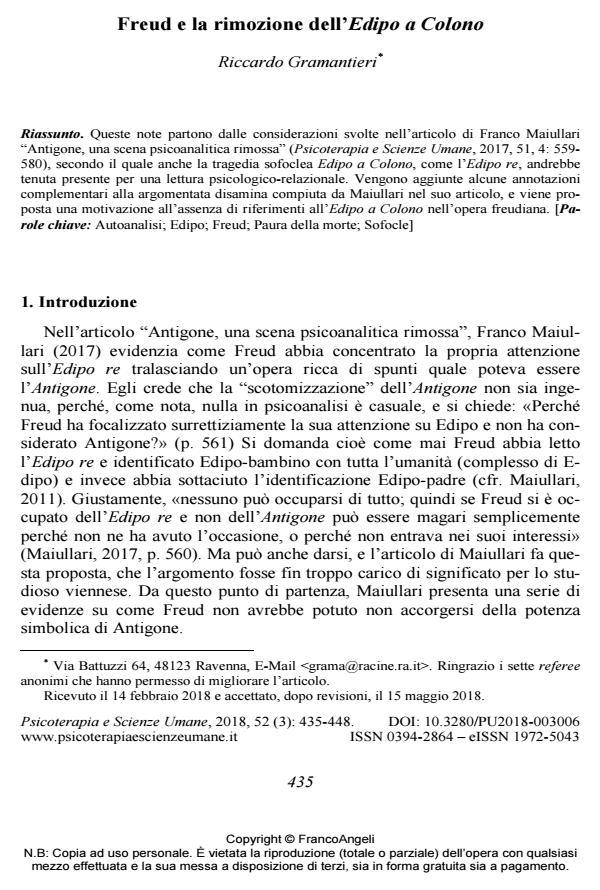Freud and the repression of Oedipus at Colonus
Journal title PSICOTERAPIA E SCIENZE UMANE
Author/s Riccardo Gramantieri
Publishing Year 2018 Issue 2018/3
Language Italian Pages 14 P. 435-448 File size 174 KB
DOI 10.3280/PU2018-003006
DOI is like a bar code for intellectual property: to have more infomation
click here
Below, you can see the article first page
If you want to buy this article in PDF format, you can do it, following the instructions to buy download credits

FrancoAngeli is member of Publishers International Linking Association, Inc (PILA), a not-for-profit association which run the CrossRef service enabling links to and from online scholarly content.
This note begins from the observations made by Franco Maiullari in his article "Antigone, a repressed psychoanalytic scene" (Psicoterapia e Scienze Umane, 2017, 51, 4: 559-580), where he says that also the Sophoclean tragedy Oedipus at Colonus, like Oedipus Rex, should be analyzed from a psychological and relational point of view. The purpose of this short article is to add a series of complementary remarks to Franco Maiullari’s well-argued examination, suggesting an explanation for the absence of references to Oedipus at Colonus in the Freudian works.
Keywords: Self-analysis; Oedipus; Freud; Sophocles, Thanatophobia
Riccardo Gramantieri, Freud e la rimozione dell’Edipo a Colono in "PSICOTERAPIA E SCIENZE UMANE" 3/2018, pp 435-448, DOI: 10.3280/PU2018-003006